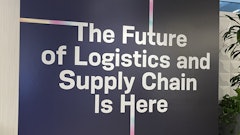
The labor shortage within the warehousing industry isn’t a new concept; it’s a roadblock that has been plaguing the industry for years. In fact, recently the U.S. Chamber of Commerce reported that if every unemployed person with experience in the manufacturing industry were employed, the industry would fill only around 75% of the vacant jobs. With the demand for warehousing workers drastically outweighing the supply, companies can no longer rely on recruitment pushes to fill their labor gaps.
So, how can companies, and the industry as a whole, ensure they are meeting their staffing needs in 2024? The key is to implement innovative hiring approaches and develop internal policies and programs that adhere to current workforce needs.
Tactical hiring approaches to implement
● Provide flexible working options. To know where we must go in warehouse hiring, we must know where we are. Last year, companies placed an emphasis on hiring for roles with full-time schedules, with minimal flexibility for a worker’s schedule. Have we not learned that this is an outdated precedent to put on front-line workers, who just like “traditional” in-office workers crave flexibility and a work-life balance? Recent survey data from Gallup even suggests that this is the case, as respondents, who are frontline workers, indicated they want to choose the exact days they work with increased PTO opportunities. On top of this, a staggering 94% of workers want flexibility in when they work.
Offering flexible work opportunities can have a direct and positive impact on one’s recruitment strategy and results. This includes providing flexible work schedules and increased PTO benefits internally, which is an effective proof point to highlight when the recruiting team is conducting outreach, targeting new and potential workers to join the team. In fact, over the past few years, flexibility has quickly climbed the ranks as one of the top priorities for job seekers.
● Embrace a worker-centric mindset. On top of focusing on tangible workplace benefits, like flexibility, companies must ensure they are actively engaging their frontline workers. Existing employees are a company’s strongest recruitment tool and it’s time every warehousing company has a worker-centric mindset. Taking the time to gauge workforce sentiment and develop internal policies to provide a better employee experience has a direct and positive impact on company recruitment while benefiting the current team of employees. This even includes putting in place learning and development sessions for teams, and increased offerings to grow a team’s knowledge within the sector. Showing how much you care for your current team will not only help you in your recruiting efforts but also help retain and grow the strongest workforce possible.
● Adopt tech-forward recruitment solutions. Additionally, with the warehousing industry facing a severe worker deficit, companies must move beyond rigid, outdated forms of recruiting tactics and meet potential talent where they are. Almost every job seeker is looking for their new opportunity on their device, so is the age of hiring flyers officially a tactic of the past? As we continue to become a more tech-forward society, it is critical that recruiting teams are adapting with the current times and tapping into the capabilities of new and emerging forms of technology to meet their ever-growing labor demands.
Look to, not from, innovative hiring technologies
When addressing the ongoing labor shortage, it is important to not underestimate the impact that emerging technologies can have on efforts. For instance, on-demand staffing platforms are growing in popularity across all industries as it allows companies to connect with thousands of experienced temporary workers at the click of a few buttons, allowing shifts to be picked up instantly.
This can have a direct link back to ensuring flexibility within the workforce, as having additional support from these short-term workers alleviates the burden placed on current teams, while also providing flexibility for temporary workers. What’s especially unique about the existing labor gaps in warehousing is there are simply not enough skilled workers available. Growing the nation’s pool of skilled workers is a complex issue, and something that will not be fixed overnight. But by tapping into staffing marketplaces, warehouses can fill their immediate staffing demands while they continue to grow their workforce with more tactical approaches like enhanced worker benefits.
Warehousing companies are clearly faced with an impossible task: filling their labor gaps when there’s not enough talent in the hiring market. To stand out and attract workers, flexibility, a worker-centric mindset and tapping into tech-forward recruitment strategies will be key.


























